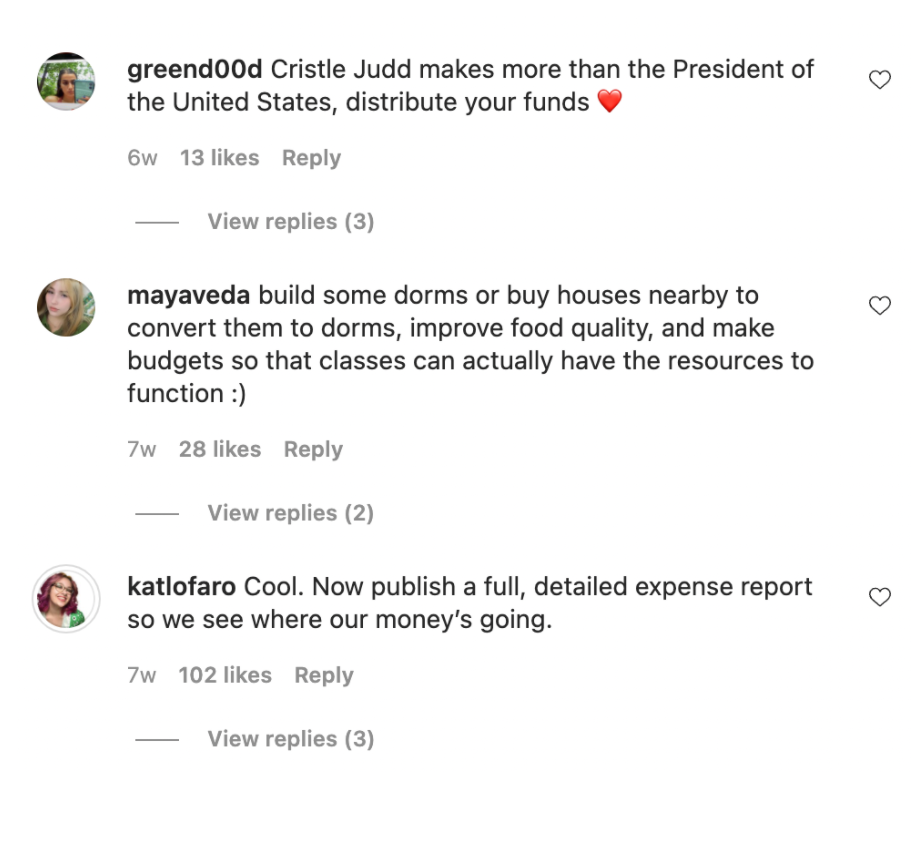Sarah Lawrence College Awarded $20 Million in Support of “Lifelong Learning”
Anya Ernst ‘24
Art by Ysabella Beatriz Chiongbian Punzalan ‘25
On September 22, 2021, Sarah Lawrence College announced an anonymous alumna donation of $20 million. This is the largest single gift ever donated in the college's history.
The Sarah Lawrence website noted the grant is "aimed at supporting and accelerating the college’s strategic vision for the future."
The blog post briefly explained that the school will "invest in the people and the technology necessary to support the College’s plans to leverage its historic strengths through new offerings in areas of excellence that complement its undergraduate education. It will also enable the College to recruit program leaders and faculty to expand its impact in professional and lifelong learning—in fields that include media, genomics, and health advocacy."
The school claims the donation will go towards improving technology, offering new classes and academic programs, and hiring more program leaders and faculty. Despite the explanation from the school, students were still dissatisfied.
Commenters on the Instagram post raised questions about housing (currently there are estimated to be one hundred students living in a nearby hotel as "on campus housing), releasing detailed expense and budgeting reports, scholarships and financial aid, food security and disability accommodations were other topics of conversation.
Words like "vague" "manipulative" and "convoluted" were expressed in responses by students. Instead of easing concerns, the grant's announcement left many with more questions and inspired rumours about the specifics of where the money is going.
Fran Kennedy '24, spoke about her ideas on the grant, highlighting mostly the school's inaccessibility for chronically ill and disabled students and lack of sustainability initiative. Kennedy hopes that the college's new ability to "recruit program leaders and faculty to expand its impact" would extend to the proposed Sustainability Director.
As Co-Chair of the school Green Rights group, Kennedy says that the organization "[is] working to hire a sustainability director at Sarah Lawrence. This was iffy before the grant because even though it is something that saves a lot of money and stress for the administrators in the long run, it is something that would require hiring an entire new person full time. And we knew that the college was struggling financially, but now that there is this huge $20 million grant this is a new window to hire someone and then reap in the benefits in the long run."
Students also expressed concern with financial aid and the housing crisis. Kat Lo Faro '24 noted the "hypocritical" nature of Sarah Lawrence's core liberal arts values and teaching principles that oppose the direct action the school makes.
"I feel like the student body, and I guess the public in general, has the right to see a clear report of where all the finances are going,” Faro said. “And by that I don't mean I need to know personal salaries, I mean percentages, how much is going to scholarships, how much is going to groundskeeping, how much is going towards water and electric...I am not going to pretend I know exactly what it takes to run a college campus but just based around the culture now or what rumours are certified true stories you are feeling I say a lot of needs to go to students through financial aid".
Sarah Lawrence Gift Giving, Philanthropy and Advancements declined interviews. However, in an interview with President Cristle Collins Judd, she revealed that the $20 million is what the President describes as a "restricted grant"—a grant whose implementations are decided through conversations with the donor and the offices of Gift Giving and Advancements during which the donor shares their ideas on what they would like to do with the money. The development office secures the school's "annual fund," which finances the college's recognized areas in need of improvement such as housing, sustainability, scholarships, and improved accommodations for disabled students. These items as found relevant through student survey and interviews were presented to President Judd.
Judd expressed that the list of needs proposed by the students were agreed upon by the administration, however she also added, "These are places that we are actually working on but they are not direct for this gift."
Understanding the distinction between the college's annual fund and this particular restricted grant reveals reasoning and limitations behind what is to be done with the money.
"[The conversations are about] understanding their interests, our priorities and how we help those align,” Judd explained. “In the case of this particular gift, this was a donor we had long been in conversation with and what this donor was interested in above all was how to help the college be financially sustainable long into its future."
The President also signified the importance of gift giving at Sarah Lawrence compared to other colleges. As a school founded with a low endowment, tuition dollars make up the majority of the school’s operating money.
"That operating is what pays salaries, and to turn on the lights, and maintenance, and all the other things," President Judd said.
With an endowment of approximately $113 million, the college is substantially less funded than other comparable universities like Barnard College with $365 million or Mount Holyoke College $789 million.
According to President Judd, the donor of this $20 million grant, an anonymous alumna, wants to focus on sustaining the future of Sarah Lawrence as it moves into its second century.
The $20 million will go towards revamping Sarah Lawrence's IT department, funding new staff members and facilitating a remodel of MySLC and other digital interfaces. Updates to IT, particularly to MySLC, will come in the next two to three years as noted by the President.
"If [the College is] going to expand their enrollment and move into new areas, they have to have the support of additional, essentially administrative help, it to work at a new scale,” Judd said. "Doing the kind of work that we are talking about, and this is hard when you are here for four years, is a really big lift of two to three years, it is like building a building except it is an invisible one."
Maria Guinnip '24 shared their frustration with the allocation of the grant to low priority areas.
"Even if it is a restrictive grant, our budget isn't restrictive,” Guinnip said. “They can use all of that donated money for those specific things [the donor wanted] and use the budget that was going towards that can go towards student housing. There are definitely other ways they can be budgeting this money to help the students and what they need rather than blaming it on the benefactor and their wants and ignoring student need. It feels like a cop out."
For many, it is difficult to be enthusiastic over the news when essential necessities for undergraduate students are deprioritized in favor of masters programs and improving technology.
"It says in the quote from the school website they say they are going to use [the donation] ‘to leverage strengths,’ but I don't know why you wouldn't focus on the weaknesses when students’ basic needs like housing are not being met" Guinnip said.
However the college ends up using the grant, President Judd said that what makes her most excited is what the donation means as a "huge statement in confidence in the school, not just in where we have been but in where we are going at a time where higher education is under enormous pressure. If we can really affirm our core values about being interdisciplinary and experiential, that you can make your own path, and that we are arts infused. We see those values through early childhood right through lifelong learning then we are making a much bigger statement about who Sarah Lawrence is as an institution."



